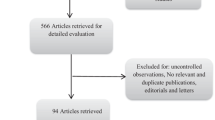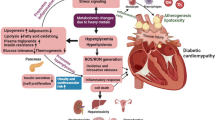Abstract
Background and objective
The standard approach for phenotyping of the human arylamine N-acetyltransferase 2 (NAT2) uses urinary caffeine metabolite ratios after a caffeine test dose taken in after methylxanthine abstinence. We tested whether these standardization measures were still needed when a more sensitive quantification technique was used.
Methods
A new liquid chromatography/tandem mass spectrometry (LC-MS/MS) method for the quantification of the caffeine metabolites 5-acetylamino-6-formylamino-3-methyluracil (AFMU), 5-acetylamino-6-amino-3-methyluracil (AAMU), 1-methylxanthine (1X), and 1-methylurate (1U) was developed. Urine samples from 77 healthy volunteers collected before and 5–6 h after oral intake of 150–200 mg caffeine were analyzed. The lower limits of quantification were 0.1 µg/ml for caffeine, 1X, 1U, and AFMU, and 0.2 µg/ml for AAMU.
Results
The urinary NAT2 ratios (AFMU+AAMU) / (AFMU+AAMU+1X+1U) before and after caffeine intake correlated well in 65 volunteers (r2=0.827; P<0.0001). In 12 participants (16%), metabolite concentrations in urine before caffeine intake were below the quantification limit. NAT2 genotyping, done in 41 volunteers for four SNPs, corroborated the phenotyping results.
Conclusion
NAT2 activity can be determined from a spontaneous urine probe in most subjects by quantification of caffeine metabolites arising from non-standardized dietary caffeine exposure using LC-MS/MS. This may facilitate the phenotyping procedure.


Similar content being viewed by others
References
Hirvonen A (1999) Polymorphic NATs and cancer predisposition. In: Vineis P, Malats N, Lang M, d’Errico A, Caporaso N, Cuzick J, Boffetta P (eds) Metabolic polymorphisms and susceptibility to cancer. International Agency for Research on Cancer, Lyon, pp 251–270
Butler MA, Lang NP, Young JF, Caporaso NE, Vineis P, Hayes RB et al (1992) Determination of CYP1A2 and NAT 2 phenotypes in human populations by analysis of caffeine urinary metabolites. Pharmacogenetics 2:116–127
Rostami-Hodjegan A, Nurminen S, Jackson PR, Tucker GT (1996) Caffeine urinary metabolite ratios as markers of enzyme activity: a theoretical assessment. Pharmacogenetics 6:121–149
Tang BK, Kadar D, Kalow W (1987) An alternative test for acetylator phenotyping with caffeine. Clin Pharmacol Ther 42:509–513
Tang BK, Kadar D, Qian L, Iriah J, Yip J, Kalow W (1991) Caffeine as a metabolic probe: validation of its use for acetylator phenotyping. Clin Pharmacol Ther 49:648–657
Grant DM, Tang BK, Kalow W (1984) A simple test for acetylator phenotype using caffeine. Br J Clin Pharmacol 17:459–464
Bendriss EK, Markoglou N, Wainer IW (2000) Liquid chromatographic method for the simultaneous determination of caffeine and fourteen caffeine metabolites in urine. J Chromatogr B Biomed Sci Appl 746:331–338
Smith CA, Wadelius M, Gough AC, Harrison DJ, Wolf CR, Rane A (1997) A simplified assay for the arylamine N-acetyltransferase 2 polymorphism validated by phenotyping with isoniazid. J Med Genet 34:758–760
Cascorbi I, Drakoulis N, Brockmöller J, Maurer A, Sperling K, Roots I (1995) Arylamine N-acetyltransferase (NAT2) mutations and their allelic linkage in unrelated caucasian individuals: correlation with phenotypic activity. Am J Hum Genet 57:581–592
Bland JM, Altman DG (1999) Measuring agreement in method comparison studies. Stat Methods Med Res 8:135–160
Nyéki Á, Biollaz J, Kesselring UW, Décosterd LA (2001) Extractionless method for the simultaneous high-performance liquid chromatographic determination of urinary caffeine metabolites for N-acetyltransferase 2, cytochrome P450 1A2 and xanthine oxidase activity assessment. J Chromatogr B Biomed Sci Appl 755:73–84
Baud-Camus F, Marquet P, Soursac M, Davrinche A, Farinotti R (2001) Determination of N-acetylation phenotype using caffeine as a metabolic probe and high-performance liquid chromatography with either ultraviolet detection or electrospray mass spectrometry. J Chromatogr B Biomed Sci Appl 760:55–63
Schneider H, Ma L, Glatt H (2003) Extractionless method for the determination of urinary caffeine metabolites using high-performance liquid chromatography coupled with tandem mass spectrometry. J Chromatogr B 789:227–237
Wong P, Villeneuve G, Tessier V, Banerjee K, Nedev H, Jean-Claude BJ, Leyland-Jones B (2002) Stability of 5-acetamido-6-formylamino-3-methyluracil in buffers and urine. J Pharm Biomed Anal 28:693–700
Nyéki Á, Buclin T, Biollaz J, Decosterd LA (2003) NAT2 and CYP1A2 phenotyping with caffeine: head-to-head comparison of AFMU vs AAMU in the urine metabolite ratios. Br J Clin Pharmacol 55:62–67
Author information
Authors and Affiliations
Corresponding author
Rights and permissions
About this article
Cite this article
Jetter, A., Kinzig-Schippers, M., Illauer, M. et al. Phenotyping of N-acetyltransferase type 2 by caffeine from uncontrolled dietary exposure. Eur J Clin Pharmacol 60, 17–21 (2004). https://doi.org/10.1007/s00228-003-0718-8
Received:
Accepted:
Published:
Issue Date:
DOI: https://doi.org/10.1007/s00228-003-0718-8




